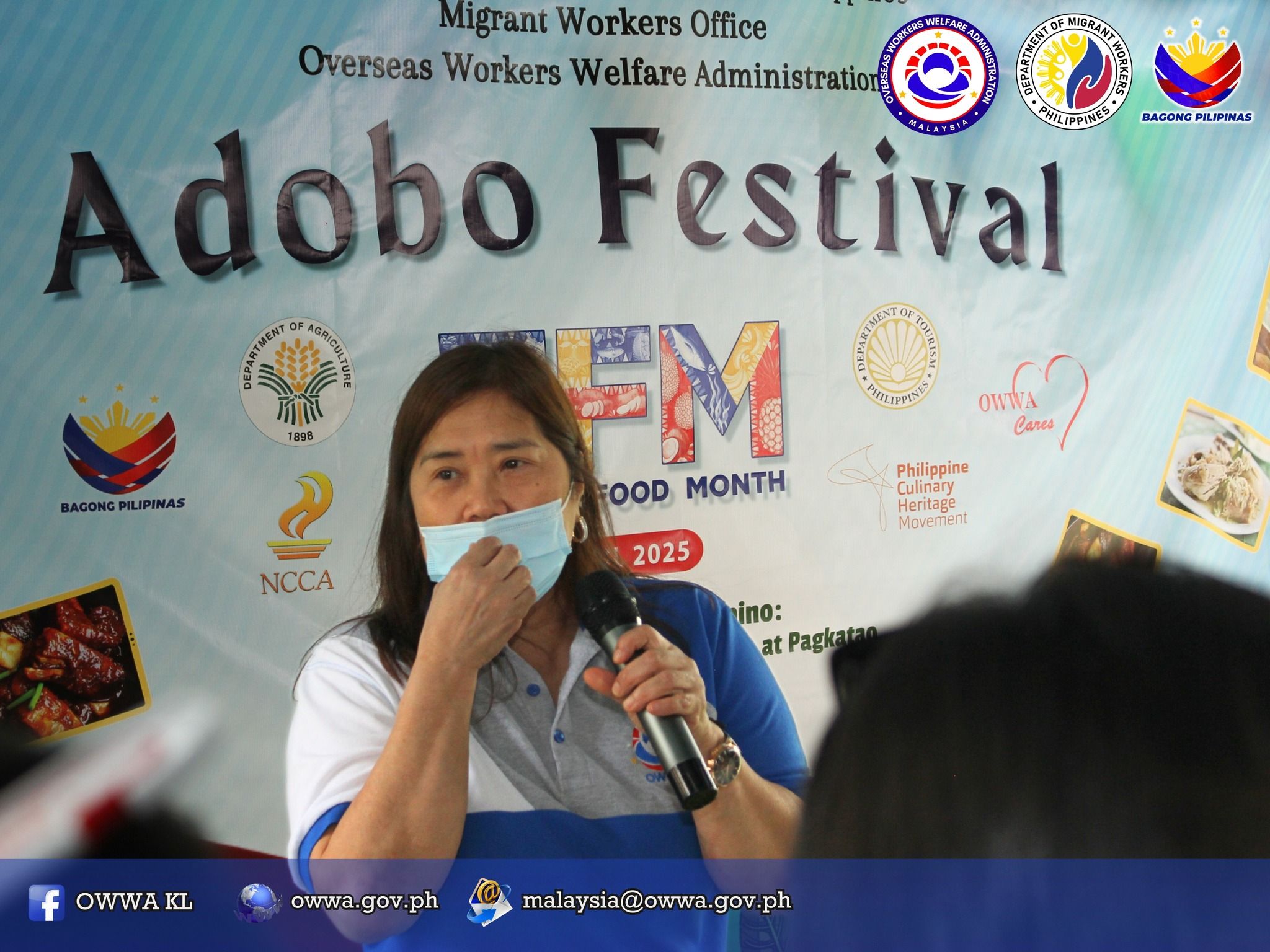Filipino Food Month 2025: 5 Ways The Philippines Is Redefining Its Culinary Identity

Welcome, Kapamilya! We use cookies to improve your browsing experience. Continuing to use this site means you agree to our use of cookies. Tell me more!
Filipino Food Month 2025: 5 Ways The Philippines Is Redefining Its Culinary Identity
Metro.Style Team
Published Apr 02, 2025 04:35 PM PHT
|
Updated Apr 29, 2025 04:33 PM PHT
Each April, kitchens in the Philippines burst into vibrant life—from the crackle of lechon over coals to the comforting sourness of sinigang. Now in its seventh year, Filipino Food Month (Buwan ng Kalutong Pilipino) has grown far beyond its origins as a 2018 presidential proclamation. It’s become a bona fide movement—part cultural archive, part culinary celebration. This year’s theme, "Sarap ng Pagkaing Pilipino, Yaman ng Kasaysayan, Kultura at Pagkatao" (“The Deliciousness of Filipino Food, Wealth of History, Culture, and Identity”), charts a bold course, looking at Filipino food not just as sustenance, but as storytelling.
Each April, kitchens in the Philippines burst into vibrant life—from the crackle of lechon over coals to the comforting sourness of sinigang. Now in its seventh year, Filipino Food Month (Buwan ng Kalutong Pilipino) has grown far beyond its origins as a 2018 presidential proclamation. It’s become a bona fide movement—part cultural archive, part culinary celebration. This year’s theme, "Sarap ng Pagkaing Pilipino, Yaman ng Kasaysayan, Kultura at Pagkatao" (“The Deliciousness of Filipino Food, Wealth of History, Culture, and Identity”), charts a bold course, looking at Filipino food not just as sustenance, but as storytelling.
 April is Filipino Food Month | Photo: Philippine Culinary Heritage Movement (PCHM)
April is Filipino Food Month | Photo: Philippine Culinary Heritage Movement (PCHM)
 April is Filipino Food Month | Photo: Philippine Culinary Heritage Movement (PCHM)
April is Filipino Food Month | Photo: Philippine Culinary Heritage Movement (PCHM)Here are five ways Filipino Food Month 2025 is reshaping the country’s food narrative—locally and globally.
Here are five ways Filipino Food Month 2025 is reshaping the country’s food narrative—locally and globally.
1. Turning meals into stories
Food is memory, and FFM 2025 invites everyone to taste the country’s past with every bite. On April 23, the KAINCON Filipino Food Conference—streamed live on Facebook—will gather chefs, farmers, and historians to explore how dishes like pinakbet and adobo carry echoes of both indigenous roots and colonial legacies. Meanwhile, on April 4 in Quezon Province, the celebration kicks off with tastings of ginataang hipon (shrimp in coconut milk), paired with stories of the region’s agricultural heritage.
Food is memory, and FFM 2025 invites everyone to taste the country’s past with every bite. On April 23, the KAINCON Filipino Food Conference—streamed live on Facebook—will gather chefs, farmers, and historians to explore how dishes like pinakbet and adobo carry echoes of both indigenous roots and colonial legacies. Meanwhile, on April 4 in Quezon Province, the celebration kicks off with tastings of ginataang hipon (shrimp in coconut milk), paired with stories of the region’s agricultural heritage.
 KainCon | Photo: PCHM
KainCon | Photo: PCHM
 KainCon | Photo: PCHM
KainCon | Photo: PCHM2. Celebrating regional roots
The Philippines isn’t just one flavor—it’s 7,641 islands of culinary diversity. This year, Quezon Province takes center stage, not only as host of the national kick-off but also as a showcase of coconut-rich dishes like pansit habhab and hardinera. Later in the month (April 25 to 27), the Ang Sarap! Philippine Food Festival at Ayala Malls Manila Bay will bring together micro and small food enterprises from across the islands to feature heirloom ingredients—like batwan, adlai, and Cordillera’s mountain rice—that rarely make it to the mainstream.
The Philippines isn’t just one flavor—it’s 7,641 islands of culinary diversity. This year, Quezon Province takes center stage, not only as host of the national kick-off but also as a showcase of coconut-rich dishes like pansit habhab and hardinera. Later in the month (April 25 to 27), the Ang Sarap! Philippine Food Festival at Ayala Malls Manila Bay will bring together micro and small food enterprises from across the islands to feature heirloom ingredients—like batwan, adlai, and Cordillera’s mountain rice—that rarely make it to the mainstream.
ADVERTISEMENT
 Ribbon cutting at the Ang Sarap Philippine Food Festival | Photo: PCHM
Ribbon cutting at the Ang Sarap Philippine Food Festival | Photo: PCHM
 Ribbon cutting at the Ang Sarap Philippine Food Festival | Photo: PCHM
Ribbon cutting at the Ang Sarap Philippine Food Festival | Photo: PCHM3. Sharing the Filipino table with the world
Filipino Food Month isn’t just for locals. This year, the celebration also goes global, with the Adobo Festival in Kuala Lumpur (April 20) and a Philippine Food & Products Fair in Beijing (April 26) putting Filipino flavors front and center on the international stage.
Filipino Food Month isn’t just for locals. This year, the celebration also goes global, with the Adobo Festival in Kuala Lumpur (April 20) and a Philippine Food & Products Fair in Beijing (April 26) putting Filipino flavors front and center on the international stage.
 The Adobo Festival in Kuala Lumpur | Photo: PCHM
The Adobo Festival in Kuala Lumpur | Photo: PCHM
 The Adobo Festival in Kuala Lumpur | Photo: PCHM
The Adobo Festival in Kuala Lumpur | Photo: PCHM4. Putting sustainability on the menu
Sustainability is a key ingredient in this year’s festivities. From the reef-to-table approach of Quezon’s coastal kitchens to Ang Sarap!’s spotlight on climate-resilient grains, FFM 2025 reflects the country’s growing awareness of food systems under pressure.
Sustainability is a key ingredient in this year’s festivities. From the reef-to-table approach of Quezon’s coastal kitchens to Ang Sarap!’s spotlight on climate-resilient grains, FFM 2025 reflects the country’s growing awareness of food systems under pressure.
At KAINCON, conversations will center on preserving traditional foodways amid a changing climate, with experts urging policies that protect local ecosystems and support small-scale producers. This green mindset ensures that Filipino food culture not only honors the past but is future-proofed for generations to come.
At KAINCON, conversations will center on preserving traditional foodways amid a changing climate, with experts urging policies that protect local ecosystems and support small-scale producers. This green mindset ensures that Filipino food culture not only honors the past but is future-proofed for generations to come.
 Pres. Ferdinand Marcos, Jr at the opening of Filipino Food Month | Photo: PCHM
Pres. Ferdinand Marcos, Jr at the opening of Filipino Food Month | Photo: PCHM
 Pres. Ferdinand Marcos, Jr at the opening of Filipino Food Month | Photo: PCHM
Pres. Ferdinand Marcos, Jr at the opening of Filipino Food Month | Photo: PCHM5. A truly collaborative feast
Perhaps most impressively, Filipino Food Month has become a model of cross-sector collaboration. Behind the scenes are the Department of Agriculture, National Commission for Culture and the Arts, Department of Tourism, and Philippine Culinary Heritage Movement—working in lockstep with provincial governments, farmer cooperatives, Filipino embassies, and local food communities.
Perhaps most impressively, Filipino Food Month has become a model of cross-sector collaboration. Behind the scenes are the Department of Agriculture, National Commission for Culture and the Arts, Department of Tourism, and Philippine Culinary Heritage Movement—working in lockstep with provincial governments, farmer cooperatives, Filipino embassies, and local food communities.
This united front ensures that the celebration feels both grassroots and national, intimate and expansive. As NCCA's Bernan Corpuz put it, the month is a tribute to “farmers, fisherfolk, and artisans”—the real guardians of the Filipino table.
This united front ensures that the celebration feels both grassroots and national, intimate and expansive. As NCCA's Bernan Corpuz put it, the month is a tribute to “farmers, fisherfolk, and artisans”—the real guardians of the Filipino table.
Whether you’re in a Manila mall, a provincial plaza, or thousands of miles away in a foreign capital, Filipino Food Month 2025 offers a deeply flavorful invitation: come hungry, and leave with a richer understanding of the Philippines—its flavors, its history, and its soul.
Whether you’re in a Manila mall, a provincial plaza, or thousands of miles away in a foreign capital, Filipino Food Month 2025 offers a deeply flavorful invitation: come hungry, and leave with a richer understanding of the Philippines—its flavors, its history, and its soul.
ADVERTISEMENT
ADVERTISEMENT


